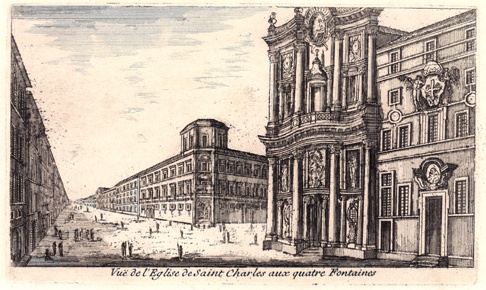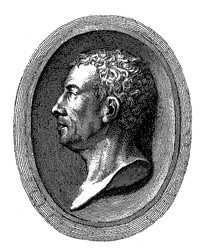Der Palazzo Albani-Del Drago alle Quattro Fontane, benannt nach den die vier Ecken der Kreuzung der beiden Straßen schmückenden Brunnen von Domenico Fontana (1543-1604), wurde zwischen 1587-1590 nach Plänen von Ottaviano Mascherino (1524-1606) für Marchese Muszio Mattei erbaut. 1719 erwarb Carlo Albani, Bruder von Alessandro, das Gebäude. 1721 wurde der Palast umgebaut und erweitert, auch um für A. Albanis Antikensammlung eine Aufstellung zu finden. Winckelmann, der Albani als Gesellschafter und Bibliothekar diente, bewohnte seit 1759 hier eine Vierzimmerwohnung im oberen Geschoss.
Bez.:
Vue del Eglise de Saint Charles aux quatre Fontaines
en

